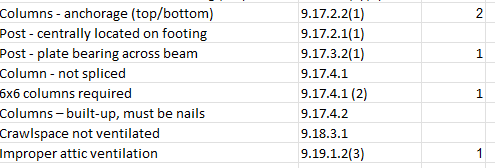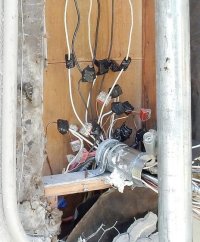Yankee Chronicler
SAWHORSE
One of the issues with writing a code section for every violation is the time commitment. In my previous jurisdiction, if I took the time to write a code section for each violation, I would have been missing inspections. However, most of our construction was done by our regular developers, so we were able to cultivate a psychologically safe environment where they knew they could ask questions when we wrote a violation. We were always happy to do further research when a correction was questioned. We got maybe 2-3 questions on corrections a year from them out of 2400 inspections a year. I'm not trying to disparage anyone from writing code sections, just highlighting that there is a tradeoff there.
Pre-COVID, building officials and fire marshals had to attend an annual all-day training session presented by the chief prosecutor for builidng code issues from the State's Attorney's Office. Every year she repeated, over and over again, that because violating the codes is an offense for which people can be fined and even go to prison, we ARE law enforcement officers, and we DO have to cite a code section.
"If you don't have a code section, you don't have a violation."
In reality, under the law, we are no different from a cop making a traffic stop. How would you feel if a cop stopped you and handed you a ticket for $500, with nothing entered for what you supposedly did wrong. Maybe he just writes, "Unsafe driving." How can you defend yourself in court if you don't know the section of the motor vehicle code you supposedly broke?
Building codes and fire codes are the same. "If you don't have a code section, you don't have a violation." Yes -- it takes time to look up the sections and enter them on the inspection report. That's part of the process. If you don't have time to do that, your department isn't allowing enough time per inspection, and is probably under-staffed.





